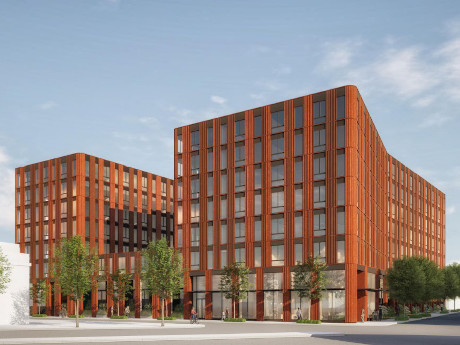— By Daniel Natsch, Senior Managing Director and Partner, Ethos Commercial Advisors —
Portland made it onto the national scene even before the last economic cycle. It’s a charming and relatively inexpensive West Coast market that boasts a great culinary scene, never-ending outdoor activities and its own sense of weirdness. It’s no wonder that Portland’s ticket to the “big time” came by way of population growth throughout the 2010s, spurred by young, highly educated professionals. Alongside that growth came the need for more housing. Institutional capital took note and began targeting Portland for investment.
The development boom of the 2010s eventually began to slow. Portland’s multifamily industry took another blow when Inclusionary Zoning legislation was passed. To beat affordable requirements, developers grandfathered as many projects as possible, creating a huge wave of entitled properties. Many of these projects would see their way through permitting, and the pre-inclusionary housing moniker became more valuable to investors. At the time, it appeared that significant in-migration would offset the significant deliveries stacking up in the pipeline.
Then came 2020. Downtown Portland became a ghost town as employees stayed home amid the pandemic. It was quiet until large crowds took to the streets to speak out for social justice following the death of George Floyd. What started as mostly peaceful protests evolved into eye-catching headlines run by national news groups. While it never seemed as bad as the news portrayed — perception is reality. During 2020 and 2021, the fact that many institutional groups were avoiding Portland was undeniable. The mere mention of Portland prompted the phrase “headline risk.”
The protests soon subsided and an eerie feeling blanketed downtown. It seemed that only houseless individuals walked the streets. The call to reduce the number of police officers and decriminalize drugs was followed by increased violence and drug use. Graffiti-laced bridges and homeless camps framed our highways. The growth we became accustomed to slowly halted, and then reversed.
Portland lost nearly 18,000 residents between April 2020 and July 2022, according to the Census. Still, the delivery of multifamily properties didn’t stop. The seemingly infinite demand for more Class A units became satiated. Portland’s vacancy rate increased 250 basis points from the first quarter of 2022 to the first quarter of 2023, with occupancy landing at 94.7 percent, while downtown vacancy hit 7.7 percent (Costar).
Rents have since softened, and average concessions for new projects hover around eight weeks. Meanwhile, the surrounding suburbs of Beaverton, Hillsboro, Tigard, Ore., and Vancouver, Wash., just north of Portland, have seen increased population growth and multifamily demand. Institutional developers like Wood Partners, Mill Creek Residential Trust and Holland — which were once prolific in Portland — now fly banners in these suburban markets.
As Portland works to recover from the past couple years, the pipeline of multifamily units under construction has fallen from its peak of 12,995 units in 2018 to 8,553 as of today. It is projected that in-migration to Portland will turn positive in 2023, and inevitably the demand for more multifamily units will follow. City leadership is working to re-establish Portland’s charm, recalibrate inclusionary housing and reconsider onerous building codes. We’re hopeful the changes are meaningful.


